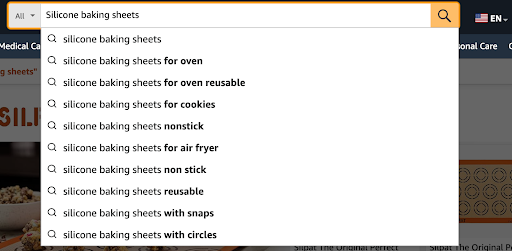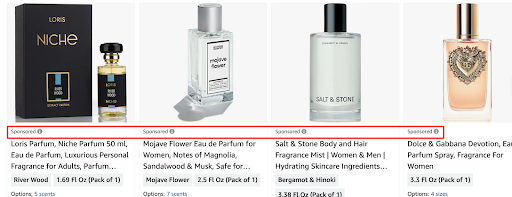Top tips for new Amazon sellers
Being a new seller on Amazon is like strapping into a roller coaster ride. You’re nervous, excited, anxious, curious, and feeling everything in between—all at once. Your mind is racing with questions: Did I do everything right? Will customers even notice my product? Can I actually compete with the pros? It’s thrilling, but let’s face it, it’s overwhelming too.
Guess what? Our Amazon experts at Sipransh Ecommgrowth feel the same every time we work with a new client. Yes, even seasoned pros like us know that launching on Amazon can bring on those roller-coaster emotions—and that’s perfectly normal. When we started selling for brands like Direct From Factory and Pasignia in Australia, we felt the same nerves.
The truth is, feeling this way is part of the process. What matters is taking the right steps to move forward, and that’s what this blog is all about—practical, straightforward tips to help you get started on Amazon the right way. Let’s dive in.
Know your niche because selling everything is a shortcut to selling nothing
Trying to sell everything on Amazon is like being a jack-of-all-trades and master of none—it doesn’t work. Successful sellers know their niche inside out. Why? Because customers are more likely to buy from someone who speaks directly to their needs, not from a random store selling yoga mats, dog toys, and garlic presses all at once.
When you focus on a niche, you’re not just selling a product—you’re selling expertise, trust, and solutions. You know what your target audience wants, and you deliver it better than anyone else. Plus, a niche makes it easier to stand out in a crowded marketplace. No one remembers the store trying to be Amazon 2.0, but they’ll remember the one offering the perfect gear for marathon runners with wide feet.
So, pick a lane, stick to it, and dominate it. Because selling everything is a fast track to selling nothing.
Obsess over your product photos—no one buys from a blurry thumbnail

Your product photos are your sales pitch—except you don’t get to talk, so they need to do all the convincing. And let’s be real, no one is clicking on a blurry, poorly-lit thumbnail that looks like it was shot on a flip phone.
Top sellers know that killer photos are non-negotiable. Customers can’t touch, hold, or try your product, so your images have to bring the wow factor. You need crystal-clear resolution, multiple angles, Amazon infographic images, lifestyle shots that scream “I need this,” and close-ups that highlight every detail.
Pro tip: Invest in professional photography or learn to DIY like a pro. Natural lighting, clean backgrounds, and proper framing go a long way. Oh, and don’t forget Amazon’s image guidelines—white background, high resolution, and no distracting clutter.
Because if your photos don’t grab attention, your competitors’ will. And let’s face it, no one’s swiping their credit card for a product they can’t even see clearly.
Don’t skimp on keywords—if they can’t find you, they won’t buy from you

If you’re not using the right keywords, your customers are lost in the jungle of millions of listings, and trust me, they’re not going to dig through the rubble to find you.
Successful sellers don’t just throw in random words and hope for the best. They research. They know exactly what their target customers are typing into that search bar—whether it’s “ergonomic office chair for back pain” or “water bottle with time markers.”
Pro tip: Use tools like Helium 10 or Jungle Scout to find high-traffic, relevant keywords. Stuff your title, bullet points, and backend search terms with them (without sounding like a robot). And don’t stop there—keep tweaking as trends and customer search habits change.
The bottom line? If your keywords don’t match what customers are searching for, your product might as well not exist. So, don’t skimp—optimize like your sales depend on it, because spoiler alert: they do.
Price smart, not desperate—don’t be the cheapest, be the best value
Dropping your prices to rock-bottom levels might get you some quick sales, but guess what? You’re also dropping your credibility—and your profits—right along with it. Customers don’t always go for the cheapest option; they go for the one that feels like the best value.
Smart pricing means balancing affordability with quality. If your product solves a real problem or offers something better than your competitors, don’t be afraid to charge what it’s worth. Highlight your product’s unique benefits, and make buyers feel like they’re getting more bang for their buck, not just the cheapest deal on the block.
Desperate pricing screams, “I’m not confident in my product!” And trust me, if you’re not confident, why should your customers be? Instead, focus on setting a price that reflects your product’s quality, your profit margins, and what your audience is willing to pay.
Because competing on price alone is a race to the bottom, and no one wins there. Price smart, show your value, and watch your sales—and reputation—climb.
Reviews aren’t optional—hustle hard to get those golden stars early

Let’s be real—who’s buying a product with zero reviews? Exactly, no one. Reviews are the lifeblood of your Amazon listing, and without them, you’re just another face in the crowd.
Successful sellers don’t sit around waiting for reviews to magically roll in—they hustle. They use Amazon’s Request a Review tool for every single sale. They engage with their buyers post-purchase (politely, of course) to nudge them toward leaving feedback. And they make sure their product and service are so good that customers feel compelled to rave about it.
If you’re launching, programs like Amazon Vine can be of great help. Yes, it takes some investment, but those early, honest reviews are gold. And remember, it’s not just about getting reviews—it’s about getting the right reviews. Five stars are nice, but detailed, enthusiastic feedback sells better than a dozen “Great product!” comments.
Bottom line? Reviews aren’t optional. They’re your credibility, your conversion booster, and your ticket to success. So, get out there, hustle, and make those golden stars happen.
Use ads wisely—it’s called PPC, not burn-all-your-cash

Amazon PPC can be your biggest advantage—or your financial black hole. The difference? Strategy. Running ads without a plan is like throwing cash into a bonfire and wondering why it’s not working. Successful sellers know that PPC isn’t about blindly spending; it’s about smart investing.
Start small and test. Use automatic campaigns to discover which keywords are converting, then shift to manual campaigns to fine-tune your targeting. Don’t bid on every keyword under the sun—focus on high-relevance terms that actually bring sales.
Ask your Amazon PPC management experts to track everything. Monitor your ACoS (Advertising Cost of Sales) like it’s your lifeline because it is. If a keyword isn’t performing, don’t cling to it. Pause, adjust, and reallocate your budget to what’s working.
Oh, and don’t forget to cap your daily budget unless you enjoy surprise credit card bills. PPC isn’t about throwing money at ads; it’s about squeezing the most ROI out of every dollar. Play it smart, and your ads will do the heavy lifting without burning through your wallet.
Keep your inventory stocked—sold out is not a flex, it’s a fail
Running out of stock isn’t a sign of success; it’s a glaring problem. When your product is unavailable, you’re not just missing out on sales—you’re losing rank, disappointing potential customers, and handing over your hard-earned spot to competitors.
Successful sellers know inventory management is non-negotiable. They track their sales trends, monitor seasonal spikes, and plan ahead to avoid the dreaded out-of-stock tag. Tools like Amazon’s inventory dashboard or third-party software can help you stay ahead of demand and reorder before it’s too late.
Remember, being prepared isn’t just about avoiding downtime; it’s about maintaining your momentum. Customers don’t care why you’re sold out—they’ll simply move on to the next available option. Keep your shelves full, and your sales (and rankings) will follow.
Respond to customers like your business depends on it (because it does)
Customer questions and feedback aren’t just messages—they’re opportunities. Responding promptly and professionally shows that you care about your customers and your business. Ignoring them? That’s like telling potential buyers you’re too busy to care—and trust me, they’ll take their money elsewhere.
Whether it’s a product inquiry, a review, or a post-purchase concern, make it a priority. Answer questions clearly and honestly, resolve issues quickly, and always maintain a polite tone (even when the customer isn’t exactly friendly). A well-handled response can turn a frustrated buyer into a loyal one and leave a lasting impression that builds trust.
And don’t forget about reviews—thank happy customers, address critical ones, and use feedback to improve your product or service. Your responsiveness doesn’t just protect your reputation—it builds it. Because in the end, your customers are the ones keeping your business alive, so treat them like they matter—because they do.
Spy on your competitors—they’re your free market research

Your competitors are like an open book—you just need to read between the lines. Want to know what’s working in your niche? Check their reviews. Customers practically hand you a cheat sheet, telling you exactly what they love and hate.
But don’t stop there. Analyze their pricing, keyword strategy, and product photos. What’s drawing attention? What could you do better? Competitors’ listings can reveal gaps in the market that your product can fill.
Tools like Helium 10 or Jungle Scout make this even easier by letting you track competitor rankings, sales, and trends. The goal isn’t to copy—it’s to learn, adapt, and improve. Your competitors already did some of the work; use it to your advantage. Collaborate with your Amazon brand consultants and create a product and strategy that outshines theirs. Because in this game, knowledge really is power.
Experiment, adapt, and never think you’ve “figured it all out”
If you think you’ve cracked the code to Amazon selling, think again. Success on Amazon isn’t about finding one strategy and sticking to it forever-it’s about constantly experimenting, adapting, and staying ahead of the curve.
Algorithms change, customer trends shift, and competitors are always upping their game. Smart sellers test everything: new keywords, pricing strategies, ad campaigns, product bundles—you name it. And if something stops working? They pivot without missing a beat.
The sellers who win are the ones who treat Amazon like a never-ending experiment. They learn from their data, try new approaches, and never rest on their laurels. So, don’t get comfortable. Keep testing, keep adapting, and keep growing—because the moment you think you’ve “figured it out,” someone else is already doing it better.
Don’t shy away from taking help
There’s no rulebook that says you have to do it all on your own. Navigating Amazon’s ever-changing landscape can be overwhelming, especially when you’re juggling product listings, ads, inventory, and customer support. Successful sellers know when to call in reinforcements—whether that’s hiring an expert, using smart tools, or seeking advice from someone who’s been there before.
Getting help isn’t a sign of weakness; it’s a smart business move that can save you time, money, and frustration. Whether you’re stuck on strategy or just need an extra hand to scale, don’t hesitate to reach out to Amazon consultants who specialize in the game. Because sometimes, the smartest thing you can do is let the experts step in—just like we do for our clients at Sipransh Ecommgrowth.






